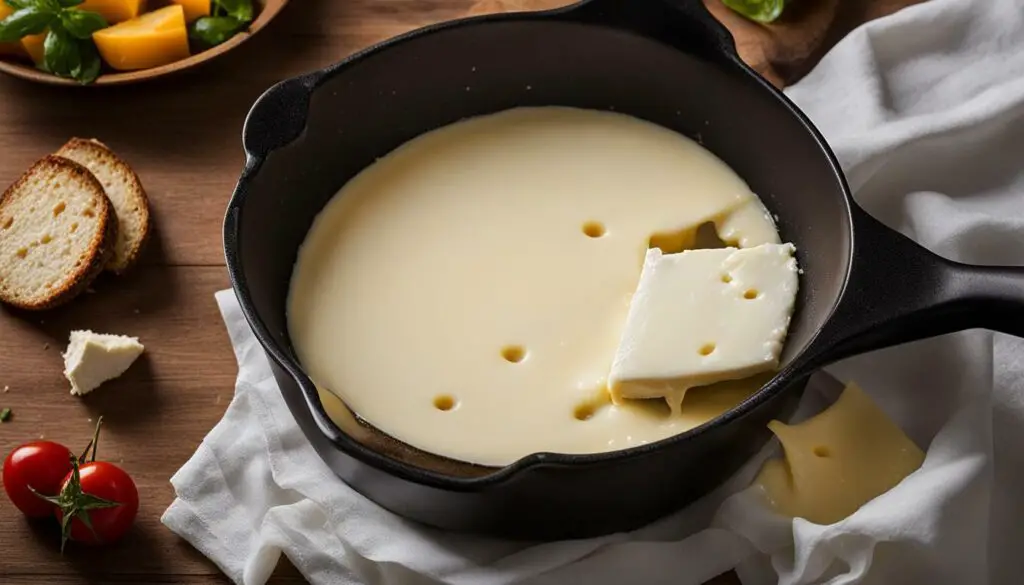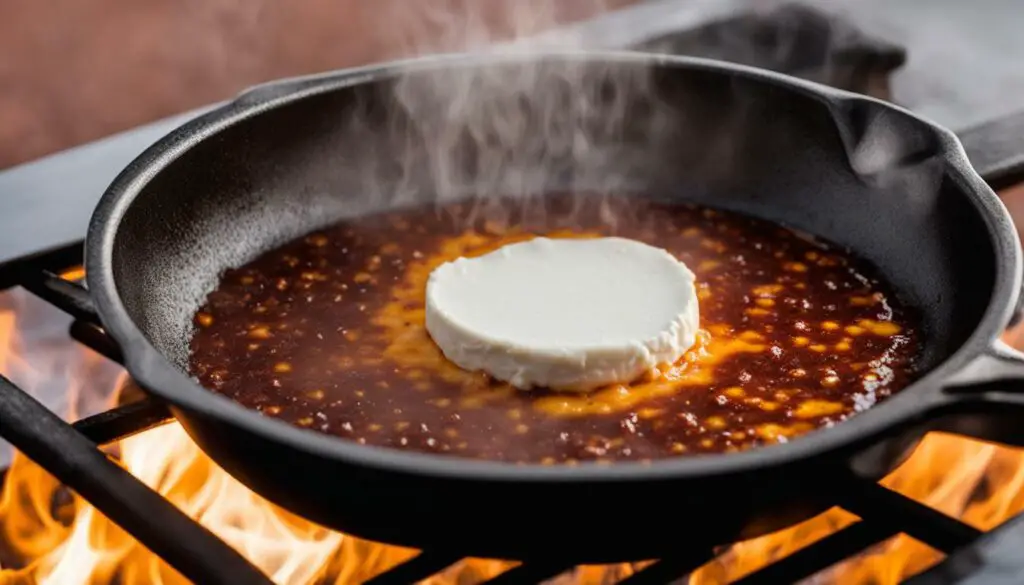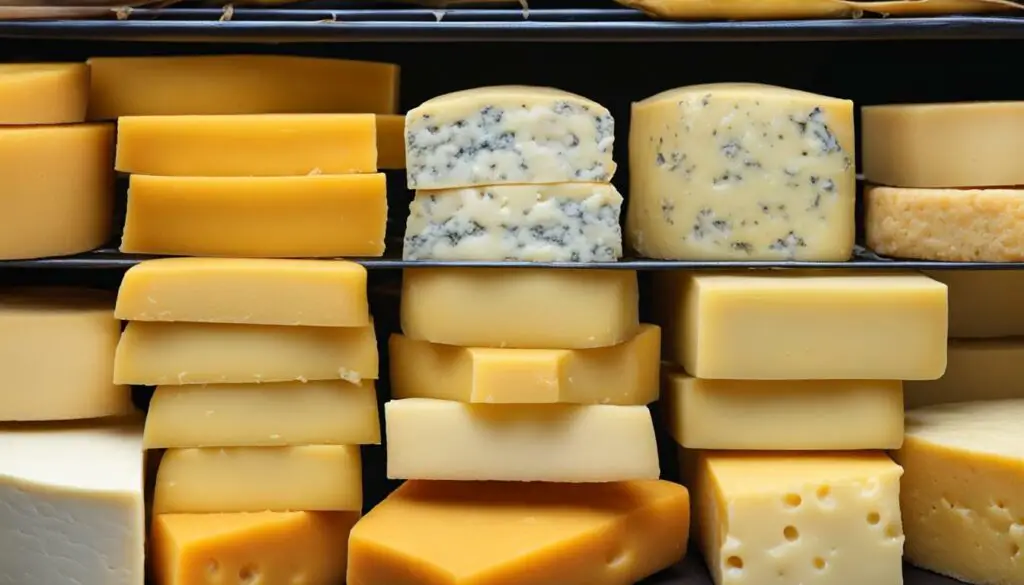If you’ve ever wondered “Does queso fresco melt”, you’re not alone. Many cheese enthusiasts are curious about its melting characteristics. Queso fresco is a fresh cheese that can be melted, although it doesn’t melt like other cheeses. It can be melted on the stove or in the microwave, but it won’t become creamy and smooth. The melting behavior of queso fresco is unique, and it’s important to understand how it differs from other cheeses.
One of the reasons queso fresco doesn’t melt like other cheeses is because of its lower moisture content. Other cheeses like Oaxaca, cheddar, and Monterey Jack are better suited for melting due to their higher fat and moisture content. The melting point of queso fresco is lower than that of other melting cheeses, which contributes to its different melting properties.
While queso fresco doesn’t become gooey and stretchy when melted, it can still be used in various recipes. It adds a tangy flavor and crumbly texture to dishes like enchiladas, tacos, and queso dip. Speaking of queso dip, there are different variations that can be made using queso fresco, such as my personal favorite queso fundido, queso blanco, chili con queso, seafood queso dip, and more.
Key Takeaways:
- Queso fresco is a fresh cheese that can be melted, but it doesn’t melt like other cheeses.
- Its lower moisture content and melting point contribute to its unique melting behavior.
- Other cheeses like Oaxaca, cheddar, and Monterey Jack are better suited for melting.
- Queso fresco can be used in various recipes, including enchiladas, tacos, and queso dip.
- Queso dip can be made with queso fresco and has different variations.
Overall, queso fresco holds a special place in Tex-Mex cuisine with its distinct qualities and nostalgic appeal. While it may not melt like other cheeses, its crumbly texture and tangy flavor make it a versatile ingredient in various dishes. So go ahead and explore the world of queso fresco in your cooking adventures!
Queso fresco has a distinct melting behavior that sets it apart from other cheeses, and understanding this behavior is key to unlocking its culinary potential. When heated, queso fresco softens and becomes more pliable, but it doesn’t melt into a creamy and smooth texture like other cheeses do.
The melting properties of queso fresco can be attributed to its lower moisture content compared to other melting cheeses. This lower moisture content prevents it from fully melting and becoming gooey. Instead, queso fresco retains its crumbly texture, making it a unique addition to a variety of dishes.
Factors such as temperature, moisture content, and fat content also play a role in the melting of cheese. Queso fresco’s lower moisture content means it requires higher temperatures to melt fully. However, even at higher temperatures, it won’t achieve the same creamy consistency as other melting cheeses.
Queso Fresco Softening when Heated
Contents
- 1 Queso Fresco vs. Other Melting Cheeses
- 2 Versatile Uses of Queso Fresco in Recipes
- 3 Conclusion
- 4 Find out more about Queso Fresco
- 5 Can You Freeze Queso Fresco? Our Guide to Proper Storage
- 6 Is Queso Fresco Healthy? Unveiling the Truth | Our Discovery.
- 7 Oaxaca Cheese vs Queso Fresco: Unveiling the Delicious Mystery
- 8 Understanding Queso Fresco in English – A Cheesy Delight!
- 9 Queso Fresco Vs Feta: Unveiling the Cheesy Differences
- 10 Discover How to Store Queso Fresco with Our Easy Tips!
- 11 Queso Fresco vs Mozzarella: Exploring Cheesy Differences
- 12 Finding the Perfect Substitute for Queso Fresco – Your Guide
- 13 FAQ
- 13.1 Q: Does queso fresco melt?
- 13.2 Q: Can queso fresco be used in recipes like enchiladas and queso dip?
- 13.3 Q: Why does queso fresco have a different melting behavior?
- 13.4 Q: What factors affect queso fresco’s melting?
- 13.5 Q: What are some variations of queso dip?
- 13.6 Q: What can queso dip be served with?
- 13.7 Q: Is queso popular in Tex-Mex cuisine?
“Queso fresco softens and becomes more pliable when heated, but it doesn’t melt into a creamy and smooth texture like other cheeses do.”
Despite its unique melting behavior, queso fresco is a versatile cheese that can be used in various recipes. It adds a tangy flavor and crumbly texture to dishes like enchiladas, tacos, and queso dip. While queso fresco is not the go-to choice for melting, other cheeses like Oaxaca, cheddar, and Monterey Jack are better suited for recipes that require a creamy and smooth melted cheese consistency.
Queso dip is a popular dish that can be made with different types of cheeses, and queso fresco can be incorporated into various queso dip variations. From queso fundido to queso blanco, chili con queso, and seafood queso dip, there are endless ways to enjoy the unique qualities of queso fresco in Tex-Mex cuisine.

The way queso fresco melts can be influenced by several factors, including temperature and its unique composition. Unlike other melting cheeses, queso fresco doesn’t become creamy and smooth when melted. Instead, it retains its crumbly texture, making it a great addition to various recipes.
One of the key factors affecting queso fresco’s melting is its lower moisture content compared to other cheeses. The lower moisture content means that when heated, queso fresco will soften and become gooey to some extent, but it won’t completely liquefy like other cheeses. This unique melting behavior is what sets queso fresco apart and gives it its distinct appeal.
The melting temperature of queso fresco is another important factor to consider. While it can be melted on the stove or in the microwave, it doesn’t require high temperatures. Heating queso fresco slowly over low to medium heat is recommended to prevent it from becoming too gooey or losing its shape.
Factors affecting queso fresco’s melting:
- Lower moisture content
- Melting temperature
- Heating method

“The unique melting behavior of queso fresco, with its lower moisture content and specific melting temperature, adds a delightful texture and flavor to dishes like enchiladas, tacos, and queso dip.”
When using queso fresco in recipes, it’s important to keep in mind its melting properties and adjust cooking methods accordingly. While other melting cheeses like Oaxaca, cheddar, and Monterey Jack may be better suited for achieving a creamy, smooth texture, queso fresco brings its own distinct qualities to the table. Whether crumbled over enchiladas or melted in a queso dip, queso fresco offers a unique taste and texture that adds a special touch to Tex-Mex cuisine.
So, the next time you’re cooking up a Tex-Mex feast, don’t hesitate to experiment with queso fresco’s melting capabilities. Embrace its crumbly yet gooey nature, and let it elevate your dishes with its rich flavor and nostalgic appeal.
Queso Fresco vs. Other Melting Cheeses
While queso fresco can be melted, there are other cheeses that are more commonly used for their superior melting abilities in various dishes. Queso fresco, a fresh cheese with a crumbly texture, doesn’t melt into a creamy and smooth consistency like other melting cheeses. However, its unique qualities make it a delightful addition to Tex-Mex cuisine.
When it comes to melting cheeses, Oaxaca cheese, cheddar cheese, and Monterey Jack cheese are often preferred. These cheeses have higher moisture and fat content, allowing them to melt smoothly and evenly. Whether in enchiladas, quesadillas, or mac and cheese, these cheeses provide the gooey and stretchy texture that many crave in melty dishes.
Factors such as temperature, moisture content, and fat content influence the melting behavior of cheeses. Queso fresco’s lower moisture content contributes to its distinct melting properties. While it won’t become creamy when melted, its crumbly texture does soften, making it suitable for certain recipes.
The Versatility of Queso Dip
Queso dip, a beloved Tex-Mex favorite, can be made with a variety of cheeses, including queso fresco. Its versatility allows for different variations like queso fundido, queso blanco, chili con queso, seafood queso dip, and more. These variations add flavors like spicy jalapenos, smoky chorizo, or succulent seafood to enhance the overall taste experience.
Queso dip is a crowd-pleasing appetizer that pairs well with tortilla chips, vegetables, soft pretzels, bread, chicken or beef skewers, nachos, and more. Its creamy, savory goodness makes it a hit at parties, game nights, or any gathering where delicious snacks are a must.

When it comes to melting cheeses, queso fresco may not be the go-to choice due to its unique melting properties. However, it still holds a special place in Tex-Mex cuisine, adding a nostalgic and traditional touch to dishes. Whether you’re looking for a crumbly texture or a melty, gooey consistency, there’s a cheese out there to satisfy your culinary desires.
Versatile Uses of Queso Fresco in Recipes
Queso fresco can be used in a wide range of delicious recipes, with queso dip being a popular choice for its creamy and flavorful nature. Whether you’re hosting a party or simply looking for a flavorful snack, queso dip variations offer a tasty option to satisfy your cravings. From classic queso fundido to zesty queso blanco, there’s a dip for every occasion.

“Queso fundido is a crowd-pleasing favorite, made with melted queso fresco and served warm with tortilla chips or bread. Its rich and gooey texture is perfect for dipping, making it a hit at any gathering.”
If you’re a fan of spicy flavors, chili con queso is the way to go. This Tex-Mex classic combines queso fresco with melted cheese and spicy chili peppers for a dip that packs a punch. Pair it with tortilla chips for a satisfying snack or serve it as a topping for nachos or tacos.
When it comes to queso dip, the options are endless:
- Seafood queso dip: Made with a combination of queso fresco and seafood like shrimp or crab, this dip offers a unique twist on the classic recipe. The delicate flavors of the seafood blend perfectly with the creamy queso, creating a dip that’s sure to impress.
- Queso blanco: This creamy white queso dip is made with a mix of queso fresco and other white cheeses like Monterey Jack or white American cheese. Its mild flavor makes it a versatile option, perfect for pairing with chips, pretzels, or vegetables.
So next time you’re in the mood for a flavorful and creamy dip, consider trying one of these queso dip variations. Whether you’re a fan of spicy flavors or prefer a milder taste, there’s a queso dip recipe to suit your preferences. Experiment with different ingredients and flavors to create your own signature dip. With queso fresco as the star ingredient, you can’t go wrong!
Conclusion
Queso fresco may not melt like other cheeses, but its unique properties make it a sought-after ingredient in Tex-Mex cuisine. Unlike cheeses that turn creamy and smooth when melted, queso fresco retains its crumbly texture even when heated. This distinct characteristic adds a delightful touch to dishes like enchiladas, tacos, and queso dip.
What sets queso fresco apart from other cheeses is its lower moisture content, which affects its melting behavior. While it can be melted on the stove or in the microwave, don’t expect a gooey consistency. Instead, queso fresco maintains its shape, adding a delicate creaminess to your favorite recipes.
However, when it comes to melting cheese for a more traditional creamy consistency, other cheeses like Oaxaca, cheddar, and Monterey Jack are better choices. These cheeses have higher moisture and fat content, allowing them to melt more smoothly and evenly.
When it comes to queso dip, the possibilities are endless. Queso fresco can be combined with other melting cheeses to create variations such as queso fundido, queso blanco, chili con queso, and even seafood queso dip. Serve it with tortilla chips, vegetables, soft pretzels, or as a decadent topping for chicken or beef skewers, nachos, and more.
In conclusion, queso fresco’s melting behavior may be different from other cheeses, but its versatility and nostalgic appeal in Tex-Mex cuisine make it an essential ingredient for any culinary enthusiast. So go ahead, explore the unique melting properties of queso fresco and enjoy the rich flavors it brings to your favorite dishes.
Find out more about Queso Fresco
FAQ
Q: Does queso fresco melt?
A: Yes, queso fresco can be melted, although it doesn’t melt like other cheeses. It can be melted on the stove or in the microwave, but it won’t become creamy and smooth.
Q: Can queso fresco be used in recipes like enchiladas and queso dip?
A: Absolutely! Queso fresco is a versatile cheese that can be used in various recipes, including enchiladas, tacos, queso dip, and more.
Q: Why does queso fresco have a different melting behavior?
A: Queso fresco has a lower moisture content compared to other cheeses, which affects its melting behavior. Other cheeses like Oaxaca, cheddar, and Monterey Jack are better suited for melting.
Q: What factors affect queso fresco’s melting?
A: The temperature, moisture content, and fat content can all influence how queso fresco melts.
Q: What are some variations of queso dip?
A: There are many variations of queso dip, including queso fundido, queso blanco, chili con queso, seafood queso dip, and more.
Q: What can queso dip be served with?
A: Queso dip is delicious with tortilla chips, vegetables, soft pretzels, bread, chicken or beef skewers, nachos, and more.
Q: Is queso popular in Tex-Mex cuisine?
A: Yes, queso has a nostalgic and traditional appeal in Tex-Mex cuisine and is a popular ingredient in many dishes.
